We traveled through the biggest airports in New York City and London too see which one was better — and the winner was clear
Which country is better?

Your support helps us to tell the story
From reproductive rights to climate change to Big Tech, The Independent is on the ground when the story is developing. Whether it's investigating the financials of Elon Musk's pro-Trump PAC or producing our latest documentary, 'The A Word', which shines a light on the American women fighting for reproductive rights, we know how important it is to parse out the facts from the messaging.
At such a critical moment in US history, we need reporters on the ground. Your donation allows us to keep sending journalists to speak to both sides of the story.
The Independent is trusted by Americans across the entire political spectrum. And unlike many other quality news outlets, we choose not to lock Americans out of our reporting and analysis with paywalls. We believe quality journalism should be available to everyone, paid for by those who can afford it.
Your support makes all the difference.The US has an infrastructure problem.
In the American Society of Civil Engineers' 2017 Infrastructure Report Card, which is published every four years, the US infrastructure received a D+ grade, which equates to it being "in poor to fair condition and mostly below standard, with many elements approaching the end of their service life," according to its guide online.
In the study, the ASCE estimated that the country needs to spend around $4.5 trillion improving the state of its infrastructure, including airports. Despite this, when Trump laid out his much-anticipated infrastructure plan in February, airports barely got a mention.
As one of the US's most important business hubs, New York's airports frequently come under scrutiny for not cutting it.
In 2017, New York's Governor Cuomo and the Port Authority proposed a $10 billion plan to completely overhaul the city's main airport, John F. Kennedy, this is currently being negotiated. The Port Authority has budgeted $1 billion towards this airport expansion and is banking on the fact that the private sector will provide the remaining $9 billion.
"This is a race, my friends," Cuomo said in 2017, comparing New York to other international cities such as London and Dubai, who have launched major infrastructure developments in the past few years. "We sat on our laurels for too long."
With this in mind, we decided to compare the experience of flying and landing at JFK versus London Heathrow.
Here's how they stack up:
One of the biggest downsides of flying out of New York on British Airways is having to go to terminal 7 at JFK. On this occasion, we got lucky and flew with one of its partners – American Airlines, which departs from the more glitzy terminal 8 at JFK.
British Airways is currently refurbishing terminal 7 at JFK and has put $65 million towards this.
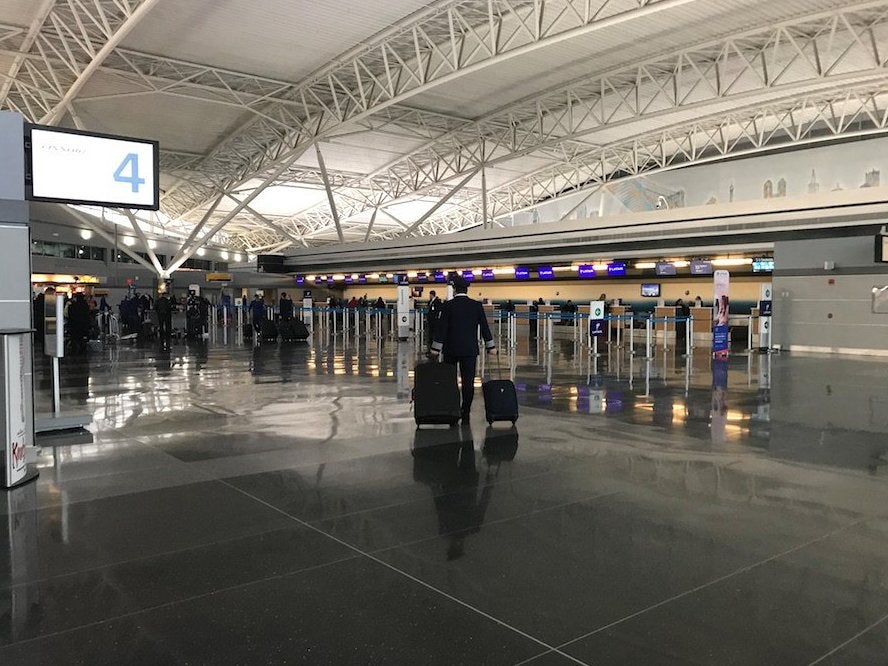
We can expect to see a complete overhaul of this terminal with a new food court, seating areas, and a slicker check-in and security area to reduce the amount of queues.
Terminal 8 is the largest passenger terminal in the airport. It is twice the size of Madison Square Garden.
The check-in area was massive and there were no queues. Self-check-in machines were there to take the pressure off the main desks at busier times.
The experience of queuing for security was hassle free, there was a ton of space and lots of staff to help.
Once we were through security, we sussed out the shopping selection. As travel retail has been one of the sector's biggest sweet spots, we were keen to see how much of a shopping destination this is.
Spending in airports hit $38 billion globally in 2016, according to GlobalData. It is set to grow by 27% to $49 billion by 2021.
There was a mix of designer brands such as Chanel and Michael Kors and mass-market stores such as Victoria's Secret.
Aside from shopping, the best way to kill time in the airport is to eat or drink.
We headed to the food court, where the majority of the hot, quick food was being served in the terminal.
There was a good amount of restaurants but a real lack of healthy choices.
We found a McDonald's and an Aunt Annie's.
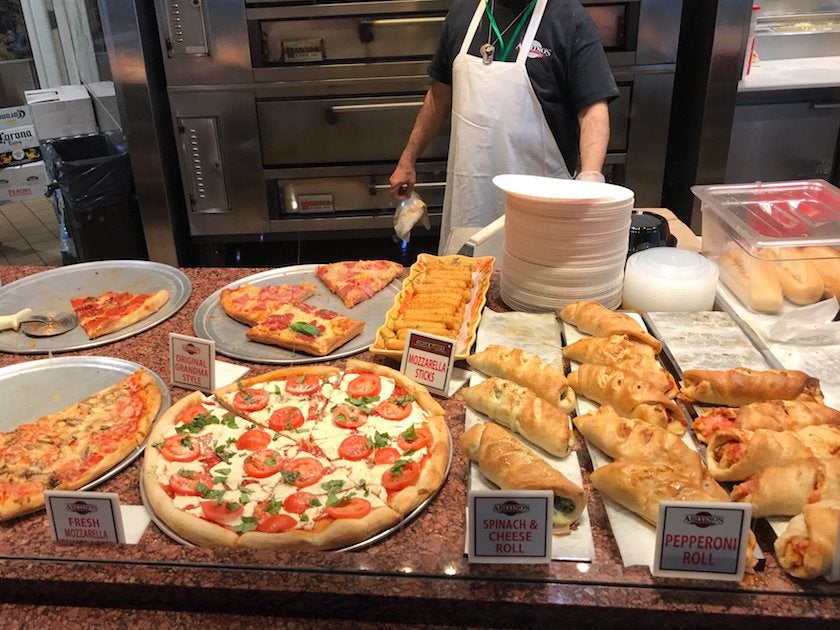
The seating area was less impressive.
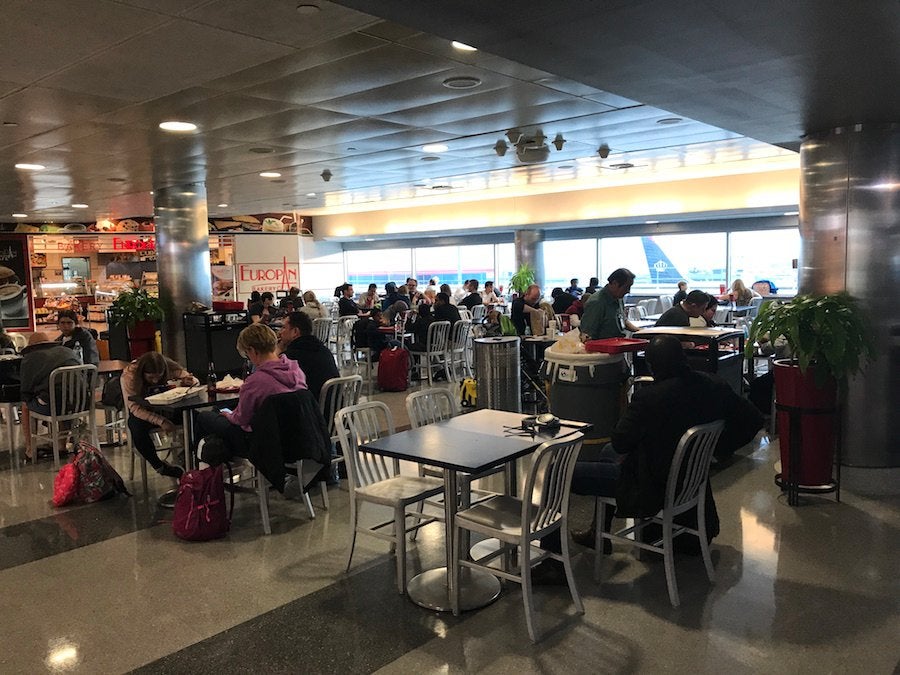
We found one formal restaurant, Bobby Van's Steakhouse, which is part of a chain of restaurants.
A steak here cost between $42 and $57.
And, of course, an Irish pub.
There were a ton of places to sit and wait for your flight and a selection of power stations to charge your phone.
In the US, any products bought at duty-free are taken to the gate for pickup. The sales assistant was not able to confirm why this policy exists. However several travel forums claim that this is to prevent international travelers from buying duty-free products for domestic travelers departing from the same terminal.
After a night on the red eye, we woke up in London at Heathrow terminal 3.
This terminal opened in 1961 and is the third largest terminal at the airport.
The first thing we note is that signs are prolific at Heathrow. You are never at a loss for directions.
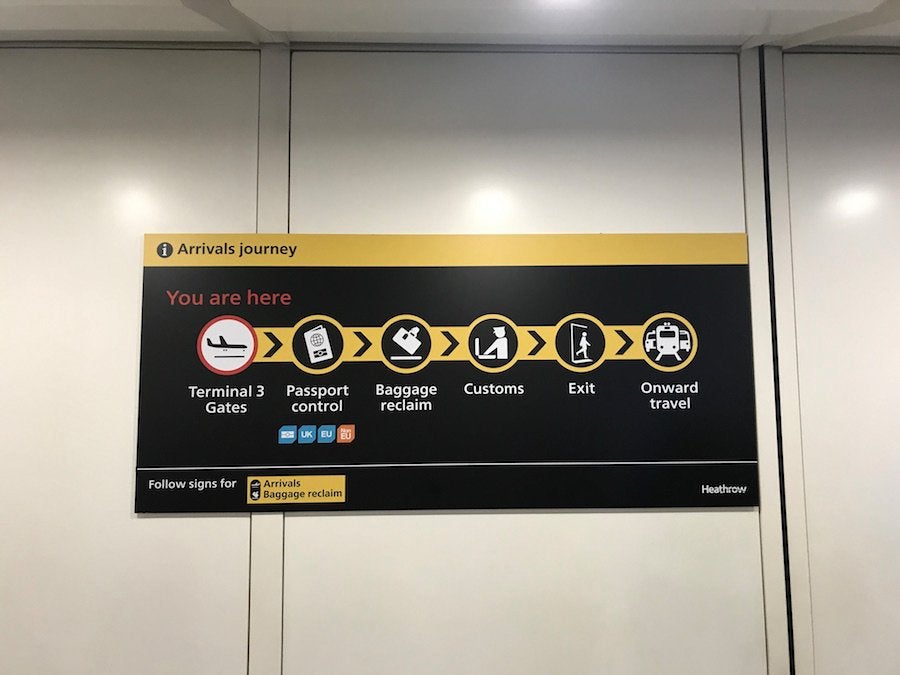
The queue for immigration moves quickly.
For UK residents with an e-passport, immigration is a speedy process. Travelers simply scan their chipped passport in the machine and a camera will detect the face of that person using the chip and their passport photo.
The experience of departing from JFK and landing at Heathrow felt very similar until you consider onwards travel.
There is a network of buses, trains, and an underground system to get you into central London or to another terminal. You can also travel further afield in the UK.
The most expensive option, the Heathrow Express, takes a speedy 15 minutes to Paddington Rail Station in West London (a taxi would take 42 minutes). A one-way ticket bought on the day costs around $37.
Just before we enter the arrivals area, Heathrow tempts us with some more duty-free shopping.
The arrivals area has a good selection of shops including the pharmacy chain Boots and a Costa coffee.
Two days later, we head back to Heathrow for the return flight. This time we hit the jackpot – British Airways terminal 5.
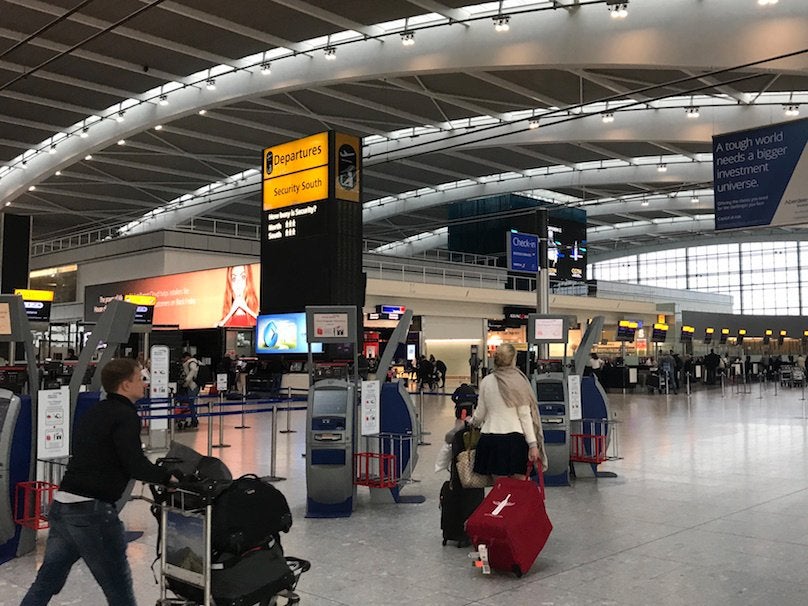
This is the largest terminal of all (over double the size of terminal 4, which is the second largest) and given it was recently built, it's the most luxurious.
This terminal is dedicated to British Airways flights and the building cost nearly $6 billion to construct.
Once through security, we hit its bright and airy central waiting area.
Terminal 5 is known for being a shopping destination.
It is clear that many of the stores are aimed at tourists who are visiting England.
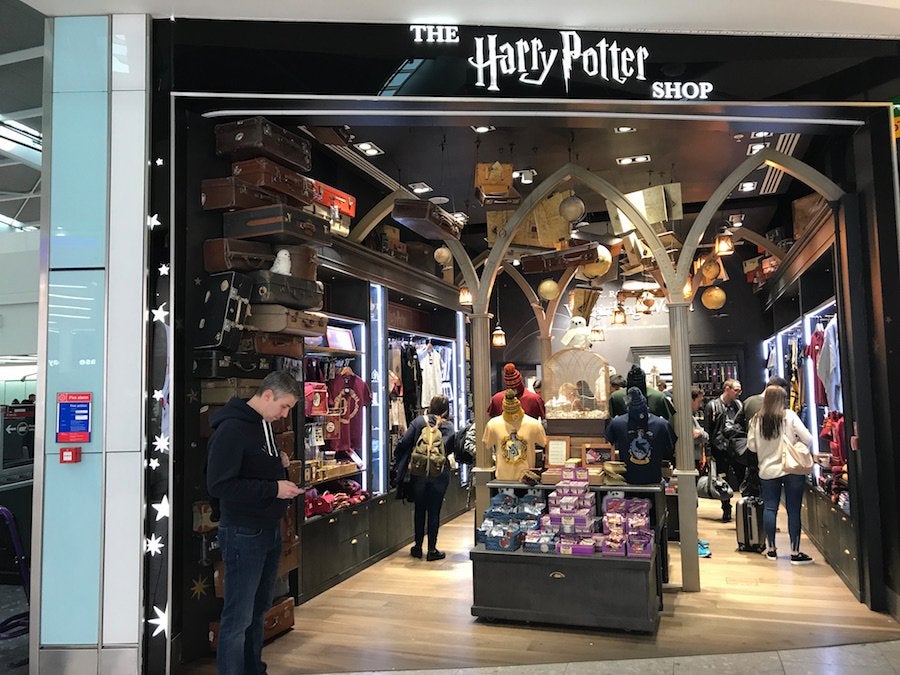
There are several bars and restaurants including Michelin star chef Gordon Ramsay's, Plane Food.
Ramsay created takeaway food boxes for travelers to take on flights.
"Airline or airport food has always been something people loved to dismiss as disappointing, flavorless crap -- and they weren't necessarily wrong," Ramsay told CNNMoney in 2015.
"Our goal was to be able to serve multiple course meals within 25 minutes, as well as sell takeaway cool boxes which are designed to be taken on flights," he added.
There is a mini train which connects you to some of the gates which are further away.
We wake up bleary-eyed at JFK terminal 7. Despite dashing off the plane as quickly as we could, the queue from our flights had already built up at immigration.
This is the last photo we took before being told to put the phone down. The waiting area was dingy and dated. This was a far cry from our landing experience at Heathrow.
Plus, with only a few officers on duty, the queue moved slowly.
Onward travel options are limited and there is no direct train into New York City. Travelers can either take an AirTrain to the nearest metro and rail stations or catch a taxi.
Our verdict: While the experience of taking off from JFK terminal 7 and landing in Heathrow at terminal 3 wasn't too dissimilar, when it came to the return leg of the journey there was a massive difference between the standards of the British Airways terminals on either side of the Atlantic.
One of the biggest problems we found at JFK was how long the immigration process took, simply because they didn't have enough officers on the desks so queues were snaking around the corner. Plus, the lack of good options for onward travel from the airport made the trip home even longer.
Overall, Heathrow was the clear winner.
Read more:
• Passengers reveal the most annoying things people commonly do on planes
• Airline pilot reveals the meanings of 23 code words passengers don't understand
• The 29 coolest small US cities to visit in 2018
Read the original article on Business Insider UK. © 2018. Follow Business Insider UK on Twitter.
Join our commenting forum
Join thought-provoking conversations, follow other Independent readers and see their replies
Comments